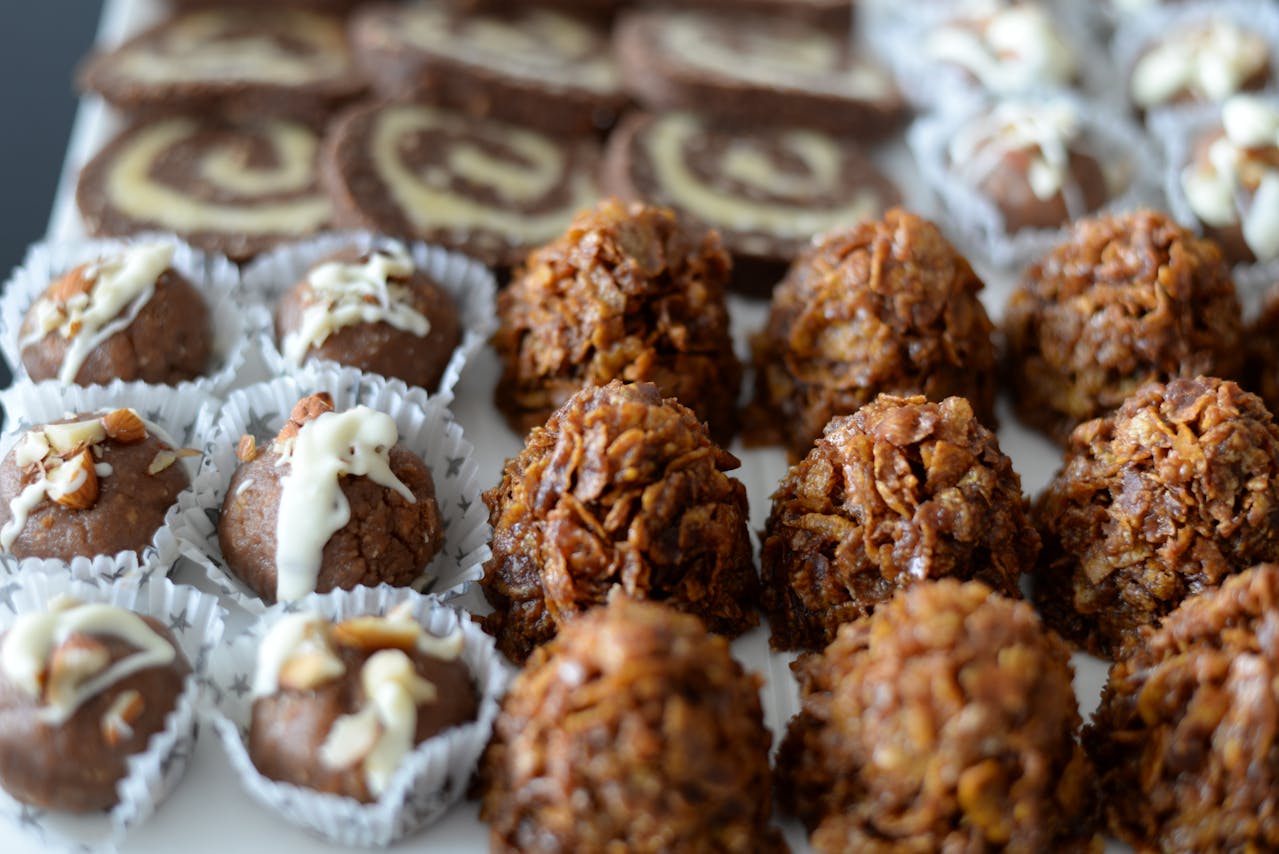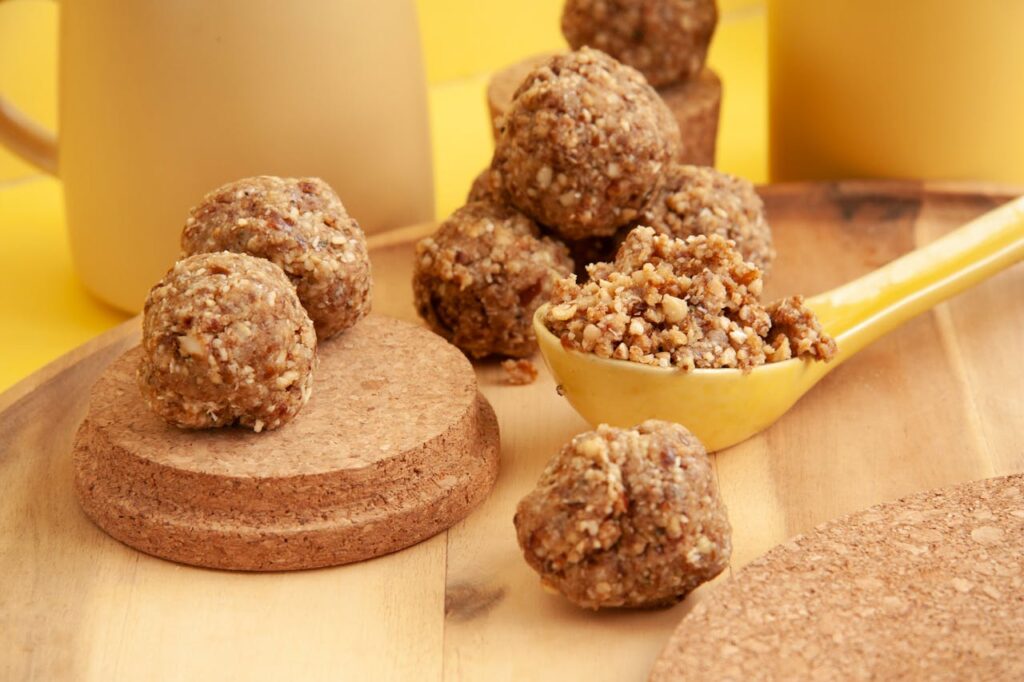I'll never forget the moment I threw my third failed batch of vegan pastry dough into the trash that weekend. It was supposed to be a simple apple pie for my sister's birthday dinner — she'd recently gone vegan, and I wanted to show her that plant-based desserts could be just as indulgent as traditional ones.
Instead, I stood in my kitchen holding what could only be described as edible cardboard, wondering why every vegan pastry recipe I'd tried produced the same disappointing results.
Sound familiar?
If you've ever attempted vegan baking, you know the struggle. Store-bought vegan pastries cost a fortune and often taste like they're made from sawdust. Homemade attempts frequently result in tough, dense disasters that bear no resemblance to the flaky, buttery pastries of our pre-vegan days.
But here's what I discovered after months of experimentation: the problem isn't that vegan pastry dough is inferior — it's that most people (including past me) are approaching it completely wrong.
The Science Behind the Struggle
Traditional pastry dough relies on butter's unique properties — its ability to create steam pockets when heated, its specific melting point, and its fat content. When we simply swap dairy butter for vegan alternatives without understanding these mechanics, we're setting ourselves up for failure.
The breakthrough came when I stopped trying to replicate traditional techniques and started understanding what each ingredient actually does in the dough. This shift in perspective changed everything.
Here's what I learned:
Vegan butter behaves differently from dairy butter. It often contains more water and less fat, which affects texture and flakiness. The solution isn't to fight this difference — it's to work with it.
Cold temperature becomes even more critical with vegan ingredients. While traditional pastry dough forgives slight temperature variations, vegan pastry dough demands precision.
Resting time isn't optional — it's essential. Vegan dough needs longer to hydrate and develop proper texture than its traditional counterpart.
The Game-Changing Method
After dozens of failed attempts, I developed a foolproof approach that consistently produces bakery-quality results. Here's the method that transformed my plant-based baking:
The Foundation (Serves 8-10)
- 2 cups all-purpose flour
- ½ cup vegan butter (cold, cubed)
- 4-6 tablespoons ice water
- 1 teaspoon salt
- 1 tablespoon sugar
- 1 teaspoon apple cider vinegar
The Process:
-
Chill everything. I mean everything. Bowl, pastry cutter, and even your work surface if possible. This single step prevents more failures than any other technique.
-
Keep the butter pieces visible. Unlike traditional methods, where you might work the butter in completely, vegan pastry dough benefits from maintaining distinct butter pieces about the size of peas. These create the flaky layers during baking.
-
Add liquid gradually. The apple cider vinegar isn't just for flavor — it helps tenderize the dough and prevents a tough texture. Add it with the final tablespoon of water.
-
Rest overnight. This isn't a suggestion — it's mandatory. Vegan dough needs time to fully hydrate and develop proper texture.
The Mistakes That Keep You Stuck
Through my journey (and helping dozens of other home bakers), I've identified the five most common mistakes that prevent success:
Mistake #1: Using room temperature ingredients. Your vegan butter should be cold enough that it's difficult to cut, but not so hard it shatters. Think "cold butter from the fridge" consistency.
Mistake #2: Overworking the dough. Vegan gluten develops differently than in traditional recipes. Mix just until the dough holds together — it should look slightly shaggy, not smooth.
Mistake #3: Insufficient resting time. Thirty minutes isn't enough. Plan for at least two hours, preferably overnight. This patience pays off in dramatically improved texture.
Mistake #4: Wrong vegan butter choice. Not all vegan butters are created equal. Look for brands with higher fat content and minimal water. Earth Balance and Miyoko's consistently deliver the best results.
Mistake #5: Expecting identical results to traditional pastry. Vegan pastry dough has its own character. Once you stop comparing it to dairy-based versions and appreciate its unique qualities, you'll achieve better results.
Beyond the Basics: Advanced Techniques
Once you've mastered the foundation, these advanced techniques will elevate your vegan pastry game:
Lamination for Extra Flakiness Incorporate additional cold vegan butter through a series of folds and rolls, similar to making puff pastry. This creates those coveted layers that separate into flaky sheets.
Flavor Variations: Add herbs like rosemary or thyme for savory applications. For sweet versions, try citrus zest or warm spices like cinnamon and nutmeg.
Texture Modifications: Substitute part of the all-purpose flour with whole wheat pastry flour for added nutrition and nutty flavor. Increase the liquid slightly to compensate.
The Economics of Excellence
Here's something that might surprise you: mastering vegan pastry dough isn't just about better taste — it's about better economics.
Premium vegan pastries from bakeries cost $4-8 per serving. My homemade version costs approximately $0.75 per serving using high-quality ingredients. That's a 90% cost reduction while achieving superior results.
For a family that enjoys regular desserts, this skill pays for itself within weeks. For those with food allergies or dietary restrictions, it's often the difference between inclusion and missing out entirely.
The Ripple Effect
Learning this technique changed more than just my baking. It taught me that most "impossible" challenges in plant-based cooking aren't actually impossible — they just require different approaches.
The confidence gained from mastering something that seemed so difficult spilled over into other areas of my cooking. I started experimenting with vegan croissants, tried my hand at plant-based puff pastry, and even began developing my own recipes.
More importantly, it changed how I approach problems in general. Instead of assuming something won't work, I now ask: "What would need to be different for this to succeed?"
Your Next Steps
If you've read this far, you're ready to transform your own vegan baking. Here's how to get started:
-
Commit to the process. Don't expect perfection on your first attempt. Plan for at least three practice sessions to develop muscle memory.
-
Invest in quality ingredients. This isn't the place to cut corners. Good vegan butter makes a significant difference in results.
-
Document your results. Keep notes about what works and what doesn't. Environmental factors like humidity and temperature affect results.
-
Start simple. Master the basic technique with a simple fruit tart before attempting more complex applications.
-
Be patient with yourself. Every expert was once a beginner. The skills you develop learning this technique will serve you for years.
The Promise
I can't promise your first batch will be perfect. I can promise that if you follow this method consistently, you'll develop a skill that transforms your plant-based baking forever.
Your future self — standing in the kitchen, proudly serving flaky, delicious vegan pastries to amazed friends and family — will thank you for taking this journey.
The question isn't whether you can master vegan pastry dough. The question is: Are you ready to stop settling for disappointing results and start creating the pastries you actually want to eat?
Your kitchen is waiting. Your ingredients are ready. The only thing left is to begin.
Ready to transform your vegan baking? Get the complete recipe, troubleshooting guide, and storage tips in my full article: "How to Make Vegan Pastry Dough from Scratch." Your plant-based pastries will never be the same.
Follow for more plant-based baking breakthroughs and tag me in your success stories — I love seeing your creations come to life!
#VeganBaking #PlantBasedRecipes #BakingTips #VeganPastry #PlantBasedLifestyle #BakingSkills #VeganRecipes #PlantBasedBaking #BakingJourney #VeganLifestyle


Comments
Post a Comment